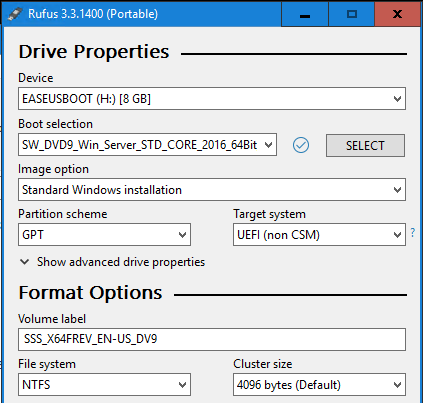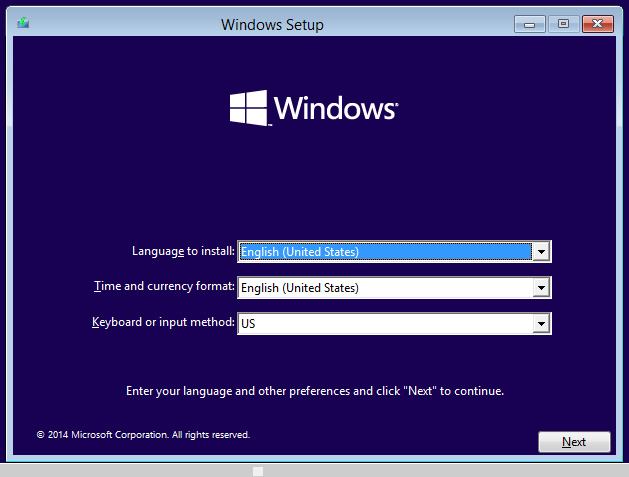
- #CREATE BOOTABLE USB WINDOWS 7 UEFI HOW TO#
- #CREATE BOOTABLE USB WINDOWS 7 UEFI INSTALL#
- #CREATE BOOTABLE USB WINDOWS 7 UEFI WINDOWS 10#
- #CREATE BOOTABLE USB WINDOWS 7 UEFI SOFTWARE#
Press and Hold Volume-Up button, then power up the machine.

#CREATE BOOTABLE USB WINDOWS 7 UEFI INSTALL#
After that, you can use the USB drive to boot your UEFI computer and perform system repairing or installation for your own purpose. Choose your operating system from the options below to be able to do a clean install of Windows 7, Windows 8, or Windows 8.1 using UEFI with your bootable UEFI USB flash drive. For example, you can copy all files from either your Windows 8 installation DVD or ISO image to your USB drive.

The final step is to copy all the files from your physical boot CD to the USB drive.

Select the disk number that is your USB drive.List all the disks and identify your USB drive:.Open the Command Prompt with administrator privileges, then start the diskpart utility:.
#CREATE BOOTABLE USB WINDOWS 7 UEFI HOW TO#
How to Create A Bootable USB Drive for UEFI Computers? But here I’m going to show you how to use the Command Prompt to create a bootable USB drive for UEFI computers.
#CREATE BOOTABLE USB WINDOWS 7 UEFI SOFTWARE#
Luckily there is a free ISO burning software that lets you create a bootable USB with FAT32 file system only. Power on your computer, and then press the F2 keys or other function keys (F1, F3, F10, or F12) and the ESC or Delete keys to open the Setup utility window. Most USB burning programs will format your USB drive as NTFS, which includes the Microsoft Store Windows USB/DVD download tool. You need to enable the UEFI mode first and then use the UEFI boot USB to start your computer. UEFI system requires that your bootdisk resides on FAT32 partition. The problem with UEFI-based computers is that they can’t boot from bootdisk with NTFS partition. This is what will help to prevent you from installing Windows for legacy booting.Nowadays, most of the new Windows 8 laptops, desktops or tablets use the UEFI replacement for the traditional BIOS, such as Surface Pro, Samsung Slate or other UEFI systems. * This drive will not allow you to install Windows for legacy booting on an MBR partitioned drive. When you boot up you'll have the option to choose either OS for UEFI booting from the Clover splash screen. Make the macOS drive the first in the BIOS boot order. When it's done, shut down, connect the drive to your CustoMac and boot to the UEFI/BIOS.
#CREATE BOOTABLE USB WINDOWS 7 UEFI WINDOWS 10#
Proceed with the install and Windows will then handle everything from there on out to complete the Windows 10 install.

Choose the unallocated space you've created and then click on New to partition the drive GPT. Choose Custom Install and remember to delete all existing partitions on the drive that you are installing to. IMPORTANT: Disconnect the Sata cables to your macOS drive before you attempt the Windows installīoot from your newly created USB drive. Now you can clean install Windows 10 UEFI on your HDD and be ready for dual booting with macOS via the Clover bootloader. Click start and create your UEFI bootable USB drive* Under the Partition Scheme tab select GPT scheme for UEFI booting and FAT32 File System, Cluster size 4096ħ. Building a CustoMac Hackintosh: Buyer's GuideĦ.


 0 kommentar(er)
0 kommentar(er)
